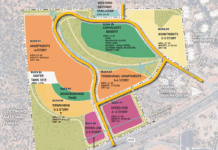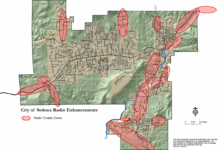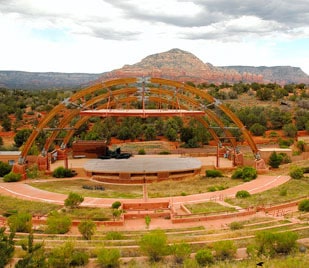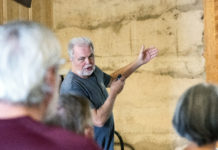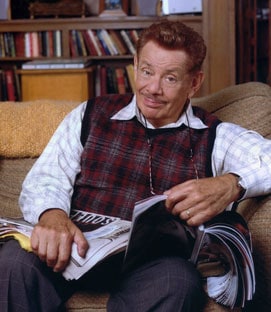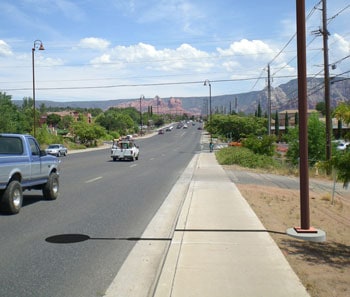The weedy, overgrown remains of the Sedona Cultural Park is guaranteed to get the upscale makeover Fitch Industries promised it nearly three years ago, according to Executive Administrator Monty Fitch, although the group still doesn’t own the land.
On Tuesday, June 9, after almost a year of silence regarding the land on Cultural Park Place in West Sedona, Fitch told Sedona City Council that funding for the project to redo and upgrade the cultural park is 100 percent.
Fitch wouldn’t estimate a closing date on the sale, but told council that Fitch Industries and its Canadian partners are currently reworking closing extensions with the land’s owner, Sathcupa.
The designs haven’t changed since the last time it was presented to the city, Fitch said, except now, after following a bumpy economic road, he is willing to divulge the name of their foreign investor — Euroasian — based in Australia.
“In December, we met an investor out of Australia who understands what we’re doing and does this type of project all over the world,” he said.
According to Fitch, the investor’s funds will come from Westerly Trusts in Hong Kong.
The 44 acres, currently owned by Sathcupa, is valued at roughly $16 million, based on Yavapai County’s assessed values.
Fitch also used his time back in front of council to introduce their architect, Vincent Leskosky of Westlake Reed Leskosky, who presented similar projects his firm has done around the country.
Fitch Industries is proposing to develop six projects on 40 acres. Plans call to redo and downsize the existing amphitheater from 5,000 open seating to 2,000 fixed, stadium seats.
Behind the seats, overlooking the stage and red rock views, a 210-room hotel and conference center will be built, with single-load corridors so every room faces the views.
Plans show a wellness center that Fitch described as a mind/body experience where people can go to learn about healthy living.
A small, a medium and two large film studios are proposed, along with a storage space and carpenter shop for set construction.
Fitch has been in contact with Zaki Gordon Film Institute and the Sedona International Film Festival in order for the incoming studios to work with local outfits, he said.
An American Indian museum will go in, Fitch said, which will be designed and operated by the same person who owns the 3,400 artifacts that will fill it.
The property will also contain an artisan village with shops, galleries, restaurants, cafes and small, open performance areas. That area will include a stop for the RoadRunner trolley and a spot for Canyon Moon Theatre.
Although in 2006 and 2007 a major Sedona Community Plan amendment was approved for the southern 23 acres of the 40-acre site, a minor amendment still needs to be approved for the remaining northern half, Director of Community Development John O’Brien said.
The amendment is necessary so that the planned projects, especially the wellness center, fit the intent of the Public/Semipublic designation in the Sedona Community Plan.
According to O’Brien, the Planning & Zoning Commission will make a recommendation on rezoning the entire site and the minor amendment for the northern half and forward its recommendation to council for final consideration.
It’s not abnormal for amendments and rezoning to be requested before the land is bought, City Attorney Mike Goimarac said, as long as the city has the property owner’s approval. Many times, those changes may be conditions the buyer is waiting for, he said.
“I feel this is a good project for Sedona,” Vice Mayor John Bradshaw said. “I feel there could have been different things on that property that wouldn’t have been as considerate as you have been.”
Councilwoman Nancy Scagnelli liked the project, but worried how it’d fare in hard economic times.
“Right now is the best time to be building something,” Fitch said, who hopes to begin work by 2010 and be done in two-and-a-half to three years.
If the economy turns around by 2012, like some predict, they’ll open at the cusp of the turnaround, Fitch said.
He also hopes that with performances and conferences on the property, they’ll easily fill their 210-room hotel and send the overflow to other local hotels.
“Our goal is to share the populace,” he said.
Councilor Cliff Hamilton wanted to make sure Fitch was aware of the Arizona State Parks Heritage Funds Grant that went with the cultural park property.
According to Interim City Manager Alison Zelms, the former cultural park received two grants from Arizona State Parks — $586,600 for improvements and $44,200 for trails. Although the cultural park closed in 2003, council made sure Fitch’s project considered the grant’s community benefits when approving the major Sedona Community Plan amendment three years later.
“It’s open for discussion about how the change in zoning and development affects the community benefit,” Zelms said.
Since the closing of the cultural park, the city has worked out an agreement with Arizona State Parks to either open another park that meets the conditions of the original agreement or pay the money back. The $44,200 grant remained since the trails are maintained.
One possible park the city may use in order not to pay back the grant is the proposed Barbara Antonsen Park on Posse Ground Road. The Heritage Funds Grant issue is set to go to council in July, Zelms said.


